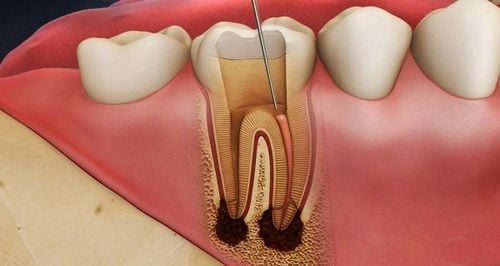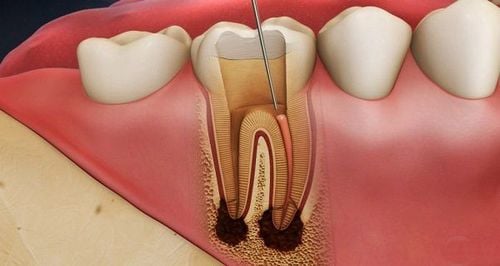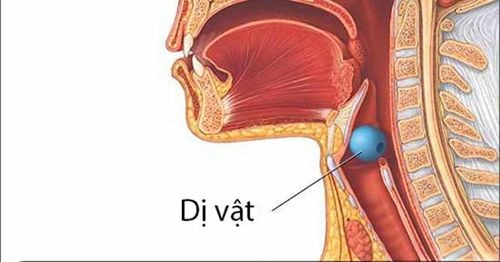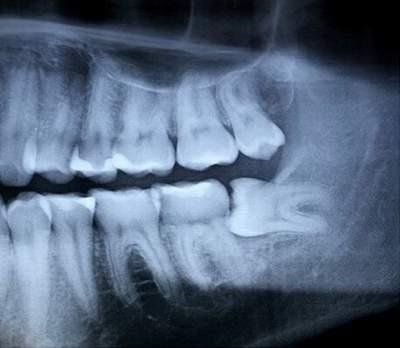This is an automatically translated article.
The article was written by the Doctor in charge of the Dental - Jaw - Facial Unit - Interdisciplinary Department - Vinmec Times City International General Hospital.
Molars, also known as molars, are the innermost group of teeth, taking on the main role of chewing on the jaw, the position is not convenient in cleaning, so it is most susceptible to decay. If decayed molars are not treated in time, the small cavities will spread into the pulp and damage the pulp. Understanding the causes, self-diagnosis and progression of the disease will help you prevent and treat it properly.
1. What is dental pulp? And how is the pulp infected?
Deep inside the center of each tooth is an area called the pulp chamber. Infection in the pulp chamber can be painful and lead to serious dental problems. The pulp is like the roots of a tree, it is the way for nutrients to enter the tooth. The pulp is made up of nerves and blood vessels, surrounded by a protective layer called dentin. Accompanying the dentin is the hard, outer shell of the tooth called enamel. Dentin is softer than enamel. Whatever makes its way through the enamel to the dentin, the pulp inside is at risk of infection.
2. How to recognize a molar tooth that is deeply rooted in the pulp?
Infection occurs when pathogenic bacteria invade living tissue. The pulp in a tooth is also living tissue and can therefore become infected. This condition is called myelitis.
Typical signs of molars with pulp decay are pain, especially appearing and increasing during chewing, and sensitivity to hot or cold foods and drinks in the early stages, then increasing pain , pain occurs spontaneously, lasts longer or can even become severe pain in acute inflammation. The tooth surface is darkened, black marks can be seen in the grooves on the chewing surface or any other surface of the tooth.
Some patients may also experience symptoms such as fever, painful swelling in the gums, spreading to areas of the face, and the appearance of tender lymph nodes under the jaw.
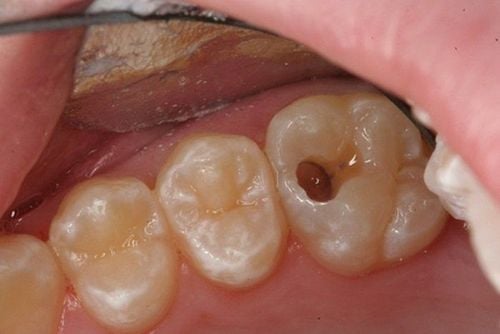
Hình ảnh một răng hàm bị sâu vào tủy
3. How did the infection reach the pulp?
The most common way for bacteria to enter the pulp and cause an infection is through a cavity. Tooth decay is the result of acids and bacteria accumulating on teeth in the form of a sticky substance known as plaque. If plaque is not cleaned regularly, tooth decay can appear.
Cavities start as small holes in the enamel, but can develop if you don't go to the dentist to fill them up. As a cavity becomes larger and deeper, it can eat through enamel to dentin. From there, just a very short way from the dentin to the pulp chamber.
However, tooth decay is not the only cause of pulp infection. Anything that weakens or breaks down enamel and dentin, exposing the pulp to harmful bacteria can cause pulpitis. Broken or broken teeth due to physical trauma can allow infection. In rare cases, failure to follow proper dental procedures can also lead to pulpitis. Over-drilling can also create weak spots that can damage the pulp.
4. Why do molars that go deep into the pulp often have a lot of pain?
Inflammation is one of the signs of infection. Whether from decay or other trauma, when bacteria enter the pulp, there is a swelling response. Because the pulp is covered in dentin and enamel, the inflamed tissue is trapped in a hard cavity, with nowhere to go for swelling to spread, thus creating pressure to build up inside the tooth, which causes a lot of pain.
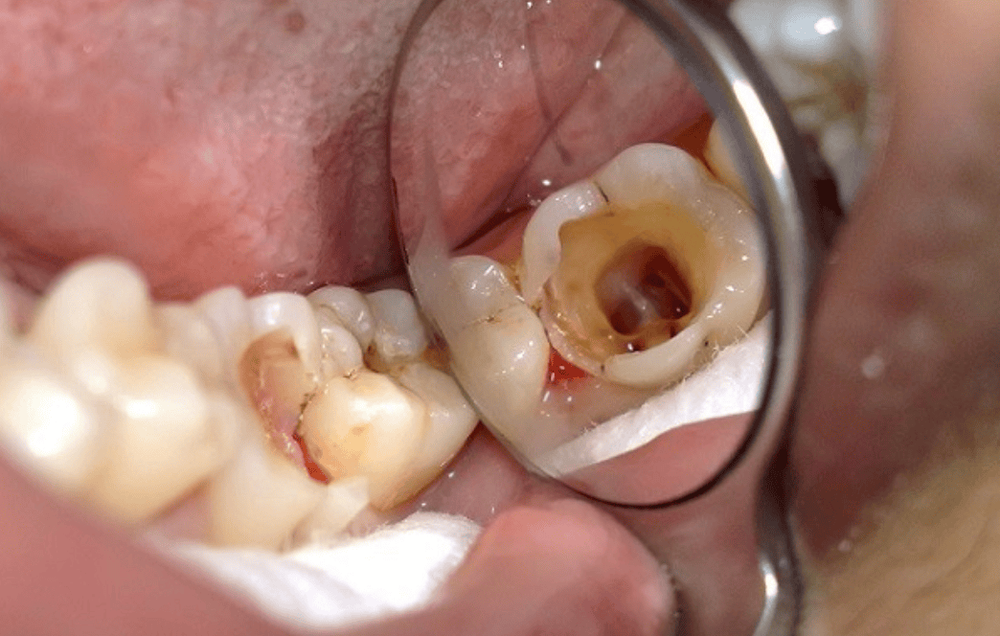
Răng hàm sâu vào tủy gây đau
5. How to handle molars that are deep into the pulp?
It is best to see a dentist at the first sign of tooth discomfort. When tooth decay is detected early, it can be filled early, often with less pain and low cost. Once it has progressed to a pulp infection (myelitis) requires more complex and expensive treatments. It is recommended to have regular dental check-ups every 6 months so that the dentist can detect caries early even if there are no symptoms for early treatment before the decay eats into the pulp.
If unfortunately, when you go to the dentist, your molar tooth has been deep into the pulp, you will be treated according to the most appropriate procedures. Infected pulp is usually treated with a root canal procedure, also known as endodontic treatment. The first step is a pulpectomy, where infected pulp tissue is removed from inside the tooth. The dentist will clean the pulp chamber and root canal and fill it with a filling agent. The final step is to seal the tooth so that no bacteria can continue to enter. You can then choose a suitable material as a crown to protect the tooth and restore its anatomical shape to restore aesthetic function and chewing.
Root canal treatment is known to be painful, but with modern endodontic treatments, you won't feel that way.
Extraction of molars deep into infected pulp cannot or endodontic treatment is not successful.
If the infected pulp is not treated, an abscess can form. This happens when an infection develops and bacteria leak out of the pulp chamber into the space between the tooth and the jawbone. An area of swelling and pain will form on the gums corresponding to the infected tooth. In very severe cases, the infection can spread to the jawbone, ears, sinuses, or neck. In rare, severe cases, the patient can even develop sepsis.
Thus, molar tooth decay into the pulp is a common disease, but we can all prevent and treat it early to prevent possible complications, limit the impact on chewing function and aesthetics. beauty, improve oral health.

Khám và điều trị bệnh lý nha khoa tại Vinmec
Root canal treatment at Vinmec International General Hospital is carried out by a team of specialists with the support of modern equipment, along with techniques for root canal treatment and sealing of the root canal system with Cold Gutta percha using a rotary file.
Root canal treatment uses a foot length meter to help the dentist work to the full working length, File proteper machine helps to clean and shape the canal well, saving working time, saving customers Opening the mouth longer than manually doing the file, the apex locator X-ray machine helps to check the artificial pulp before, during and after welding.
Root canal treatment is a technique that has been around for a long time, but treatment with a machine file has only been around for a few years, and Vinmec always approaches new technologies to take care of oral health in the best way. for everyone.
Customers can directly go to Vinmec Health system nationwide to visit or contact the hotline here for support.
MORE:
Pulpitis: When to treat? Is pulpitis dangerous? Steps to seal the canal to treat pulpitis





